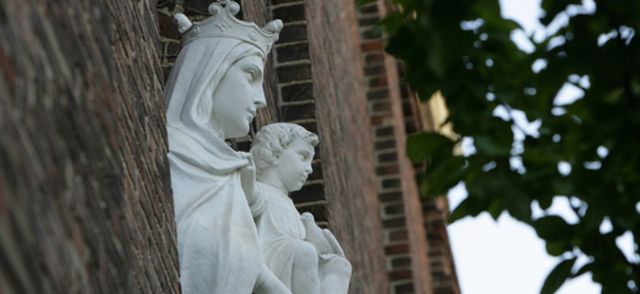
Religious Studies Faculty Publications
Document Type
Article
Publication Date
2004
Publication Source
Teaching Ethics
Abstract
Imagine a man, unknown to you, standing in your backyard calmly clasping and unclasping his hands three times each hour. If we ask "What is he doing?" we would not likely be satisfied with these words: "He's clasping his hands three times per hour." There is something unnerving about the whole scene, not only because we cannot comprehend the point of clasping one's hands three times per hour; we want to know, "What's he doing in my back yard?"
There is a similarly unnerving quality about the description of the Columbia disaster as posed by the case study. By it we are tempted to equate the task of moral reasoning with the assignment of blame. Rodney Rocha, the engineer who chairs the Debris Assessment Team, strongly objected to the decision by Linda Ham (chair of the Mission Management Team) to withdraw pleas made to the Department of Defense for assistance by satellite and ground facilities in order to obtain higher resolution images of the shuttle while in flight. Ham, whose call it was to make, reasoned that further imaging was too expensive and frankly, too late to be of any use. Rocha insisted Ham's decision was "wrong" and "bordering on irresponsible" because both the stakes and the probability of failure were high enough to trump all consideration of costs and practicality. Thus one engineer is pitted against another. We in turn wrestle to assign blame so that we can breathe a sigh of relief.
However, if we are honest with ourselves, affixing blame would not entirely remove our sense of unease. Like the description of the stranger (factual as far as it goes) — "he's clasping his hands three times per hour" — we suspect that there is something missing from the description, and consequently something anemic about our moral reasoning about this tragedy.
Sometimes a fresh insight can be generated by the most surprising of conversation partners. All but forgotten, 12th-century mystical theologian Hugh of St. Victor once wrote that all of creation labors against an inevitable corruption attributable to "sin." Regardless of sin's origins, the reality of the human condition is twofold. In the first place, this physical world is not Eden. In modern parlance, entropy increases, things fall apart, and only by expending great energy can disaster be averted, and then only sometimes.
In Hugh's mind, figuring out how best to do this was the provenance of the engineer; mechanical arts have to do with fortifying the body against hunger and harm and contriving "remedies" for alleviating physical weaknesses resulting from the corruption of creation by sin. Hugh seems to make a good point: there is a sense in which the question, "Who is right between Ham and Rocha?" reduces to "Whose mechanical reasoning is sharper?" In the end, moral reasoning comes down to "engineering judgment." Unfortunately, those of us who are under-trained in engineering are thus constrained to be spectators to their debate.
Inclusive pages
85-88
ISBN/ISSN
1544-4031
Document Version
Postprint
Copyright
Copyright © 2015, Teaching Ethics.
Publisher
Society for Ethics across the Curriculum
Volume
4
Issue
1
Peer Reviewed
yes
eCommons Citation
Kallenberg, Brad, "On Locating Disaster" (2004). Religious Studies Faculty Publications. 77.
https://ecommons.udayton.edu/rel_fac_pub/77
Included in
Catholic Studies Commons, Christianity Commons, Ethics and Political Philosophy Commons, Other Religion Commons, Religious Thought, Theology and Philosophy of Religion Commons



Comments
Article available for download is the author's accepted manuscript. Some differences may exist between this version and the published version, so researchers who wish to quote material directly are advised to use the version of record, available in academic libraries and from the publisher.
Permission documentation is on file.